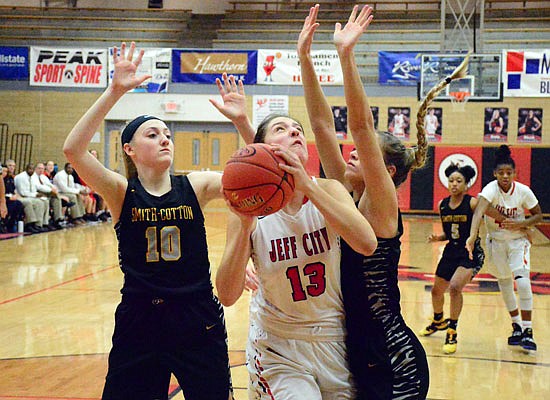You never know what will trend on Twitter on a day-to-day basis.
Something that caught my eye last week was a tweet from Brian McIntosh, the girls basketball coach at Wamego High School in Kansas. In his tweet, McIntosh thanked 41 Kansas athletic directors who voted in favor of using a shot clock, while 238 opposed it.
Whether or not to use a shot clock in high school basketball is a debate that has been going on for years and years. It's a debate with very little middle ground; you're either for it or against it.
In his tweet, McIntosh displayed he was a proponent for a shot clock, suggesting, "Maybe in the future we can look at what is best for the game & players." The replies to his tweet were folks arguing back and forth on both sides of the debate. Some were interesting, others were more like personal attacks.
According to a story in the USA Today from 2011 - there's not much recent research on high school shot clocks, trust me - only eight states have adopted the shot clock. The National Federation of State High School Associations has voted down implementing the shot clock nationwide, leaving the decision up to individual state associations.
I can see the arguments for a shot clock. The NBA has it, and a generation ago college basketball implemented it, first at 45 seconds, then 35 and now currently at 30. If the higher levels have it, why not have high schools join the mix?
A shot clock also eliminates the possibility for teams to stall when they take a lead and want to hold it. Proponents for a shot clock say it improves the pace of play.
I've been covering high school basketball for about a decade now, and I've never once thought a shot clock would make the game significantly better. Here's why:
Very rarely do high school teams stall, or at least that's hardly been the case in the games I've seen. And if teams do stall, then it's up to the other team to get the ball back with their defense.
In 1983, there was no shot clock in college basketball. NC State, on its way to winning a national title, played in a few postseason games where teams stalled on offense late in an effort to seal the win.
Considered unorthodox at the time, NC State fouled and put the other teams on the free-throw line. Players would miss their free throws, and NC State would find a way to rally and win. One thing I don't hear about that season are complaints that a shot clock should have been in place, making things easier on NC State.
Teams are scoring just fine without the use of a shot clock. If there was a plethora of low-scoring games, that would be one thing, but that's not the case.
In boys basketball, Jefferson City, Helias and Blair Oaks are averaging 66, 61.8 and 59.6 points, respectively. For the girls, the Lady Jays, Lady Crusaders and Lady Falcons are scoring 58.9, 57.1 and 56.4, respectively. It's a small sample size, but these are teams that aren't having a difficult time putting the ball in the hoop. If anything, a shot clock might lower their point totals.
In games that become lopsided, and that can be a common occurrence in high school basketball, a shot clock will have little impact.
One of the strongest arguments against a shot clock is the logistical and financial implications.
Using a shot clock requires an extra operator at the scorestable, much like in football with a play clock operator. Installation of shot clocks also costs at least a few thousand dollars. That may not seem like much, especially at bigger high schools in the state, but it would be a hassle for several Class 1 schools in Missouri that are already squeezing everything they can out of their budgets, academic and athletic.
Cindy Adsit, the Washington Interscholastic Activities Association assistant executive director, told the NFHS "the game itself is essentially the same, with or without a shot clock." I agree with her.
If the NFHS wants to implement the shot clock nationwide, I have no problem with that. But if the Missouri State High School Activities Association puts it to a vote, I say there's no need for a shot clock in Missouri.
Missouri high school basketball is fine the way it is. If it ain't broke, don't fix it.

